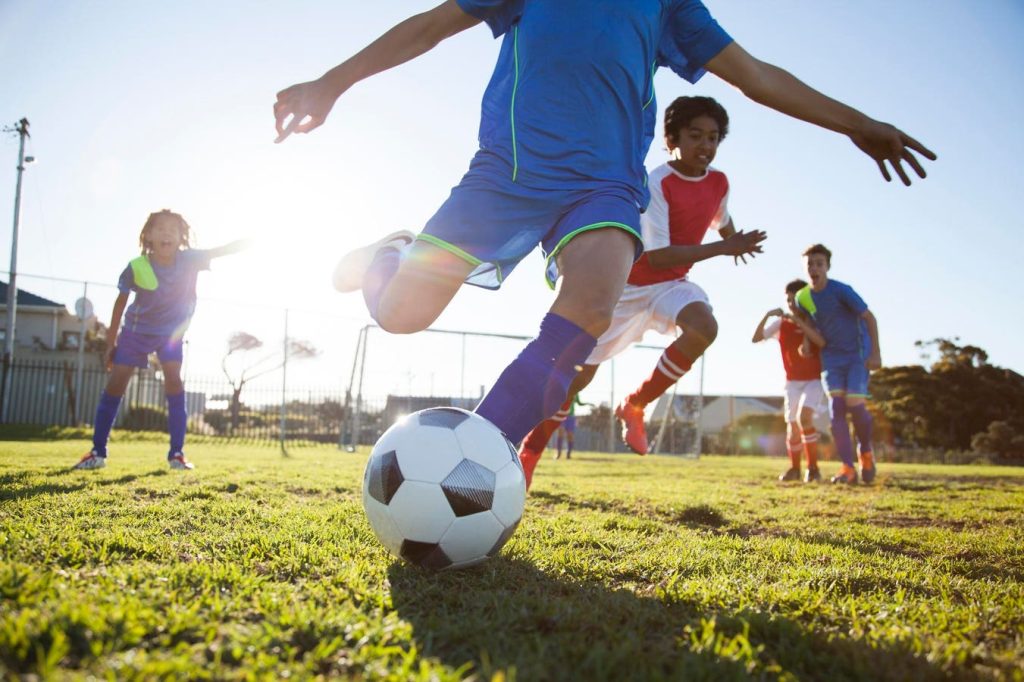Long before the Covid-19 pandemic began in early 2020, the U.S. was already in the throes of another very-bad-for-health epidemic—an epidemic of physical inactivity among kids. During the 2010s, efforts were made to increase youth participation in sports to get more kids moving more and help combat this epidemic. The efforts to get youth to play more sports like basketball, baseball, soccer and volleyball seemed to be working until another ball—the severe acute respiratory syndrome coronavirus 2 (SARS-CoV-2)—rolled in to throw its spikes into things. During the pandemic, things kind of went in reverse youth sports-wise, according to the just-released State of Play 2023 report from the Aspen Institute’s Project Play initiative. As of last year 2022, children were playing team sports less often than they did four years prior. While youth were still trying sports last year about as much as they did before the pandemic, they’re not playing them nearly as frequently.
More specifically, results from two sets of national representative surveys of American’s youth—one of them commissioned by Sports & Fitness Industry Association (SFIA) and the other one being the National Survey of Children’s Health (NSCH)—showed that from 2019 to 2022, the percentage of those six to 17 years of age participating regularly in team sports dropped by about 6%. It went from 39.6% down to 37.4%. This meant that around 1.2 million fewer youth were regularly playing team sports in 2022 compared to 2019. The percentage of those playing any team sport at least once in the course of a year did stay about the same, around the 61% mark. But playing a team sport at least once means that some of them could have literally played the team sport only once in the course of a year. And that ain’t the same as playing sports regularly.
This reversal in progress was likely due to what happened in 2020. That’s when America got caught with its collective pants down with the SARS-CoV-2 spreading in a relatively uncontrolled manner. Many businesses, organizations and programs shut down at least some operations to slow this spread and “flatten the curve” (remember that phrase?) in order to give political leaders time to figure out what the heck to do. In the meantime, political leaders didn’t really have many plans in place to keep kids active and engaged under such circumstances.
Of course, these down numbers did come from surveys, and no survey is perfect. A survey of a sample of kids and households is not the same as asking each and every kid and household in the U.S. the same questions. However, it’s not as if these two surveys consisted of simply going to the local coffee shop and asking a few parents in the latte line some questions. For example, the SFIA-commissioned one interviewed online around 18,000 folks ages 6 and older in 2022. That same year the NSCH managed to get responses from 54,103 different households. So, such samples were large enough and nationally representative-tive enough to mean that any observed down-trends should be taken very seriously.
Not all the news from the surveys was downers, though. While the percentage of boys in the six to 17 year age group playing sports on a regular basis dipped slightly from 41.2% in 2019 to 40.2% in 2022, the percentage of girls in that same age group regularly playing sports went up from 33.0% to 34.5%. There was also a jump among those in households making less than $25,000 a year from 20.9% to 25.8%.
Plus, not all states fared exactly the same during the pandemic, virus-wise and sports participation-wise. Some states did maintain higher sports participation rates than others. The best were a pair of M&M’s, meaning Massachusetts and Minnesota. These two more Northern states had the highest youth sports participation rates of all 50 states, with 62.9% and 62.8%, respectively, of those in the six-to-17-year age range either playing on a sports team or taking sports lessons in 2020 and 2021. Those percentages were well above the national average of 51%.
At the opposite end of the spectrum from those M&M states was Nevada, which had a very dicey percentage of 42%, the lowest percentage of all the states. When fewer than half the kids in your state are playing any sports, that may be playing roulette as to what chronic medical conditions may emerge in the near and distant future. The numbers went really South in much of the Southeastern United States. Of the 16 states with the lowest participation rates, nine were in this Southeastern region.
Nevertheless, with eight states—Massachusetts, Minnesota, North Dakota, Vermont, Iowa, Nebraska, Kansas, and New Hampshire—already above the 60% sports participation level, there is hope that the U.S. can achieve the Healthy People 2030 goal of 63% youth sports participation in the remaining six years of this decade. During the Aspen Institute’s 10th Anniversary Project Play Summit held back in May 17 and 18 in Colorado Springs, Colorado, Tom Farrey, the founder and executive director of the Aspen Institute’s Sports & Society Program, challenged leaders to meet this 63% goal by 2030.
As Jon Solomon, the editorial director of the Sports & Society Program, described, “This was our biggest Project Play Summit to date with 600+ attendees. The youth sports model has made progress in the last decade to build healthy children through sports.” Solomon added, “Still, more is needed – and it must come from all of us. The Summit reinforced the extent to which we are all connected in this space. No one entity can correct the model; it must take all of us.”
Julie Foudy, a two-time FIFA Women’s World Cup champion and two-time Olympic gold medalist who co-hosted the Summit, related, “I’ve lived youth sports and have kids. I am a big believer in the power of sports.” She continued by saying, “Sports transforms communities. It breaks my heart [considering] the number of kids who can’t play multiple sports.”
And Kevin Carroll, the author of Rules of the Red Rubber Ball and co-host of the Summit with Foudy, mentioned how people “used play to cope with the pandemic.” He also indicated what should be done to increase youth sports participation: “Decreasing barriers and increasing access. Waiving participation fees. Increasing field space and access.”
This year, 2023, has been sort of a transition year in dealing with the Covid-19 pandemic. The questions are whether 2023 and 2024 will be transition years in dealing with another epidemic—the physical inactivity epidemic—and whether America has a sporting chance of solving this ongoing health and societal problem.
Read the full article here










